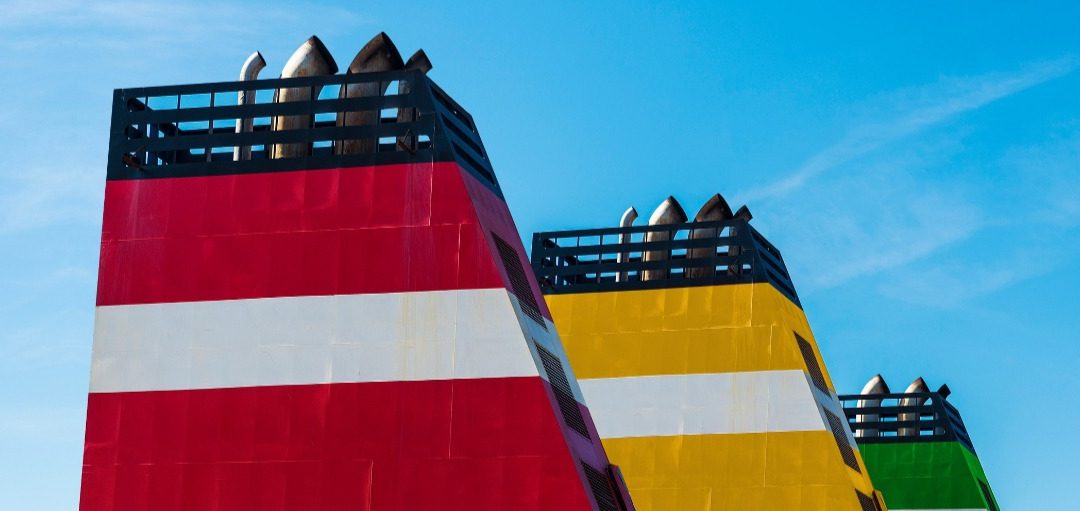Shipping companies in Asia and around the globe are steaming ahead with efforts to minimize their carbon footprint as the urgency to decarbonize intensifies after a fairly smooth transition to the International Maritime Organization’s low-sulfur mandate for marine fuels.
The IMO in April 2018 laid out its strategy to reduce the shipping industry’s total greenhouse gas emissions in 2050 by at least 50% from 2008 levels, and to reduce CO2 emissions per transport work by at least 40% by 2030.
Various non-government environmental organizations recently voiced support for the emission reductions at IMO’s virtual GHG talks in early July.
The NGOs in a joint statement said “good technical progress” made at the virtual event “revealed that a properly enforced goal-based operational efficiency measure would unlock net savings for the shipping industry, as well as reducing CO2 emissions, and … looks increasingly inevitable.”
Shell, Deloitte Netherlands and Deloitte UK collaborated in a report released July 7 showing 95% of shipping executives interviewed worldwide viewed decarbonization as important, or a top-three priority, and nearly 80% noted its importance had increased significantly over the past 18 months.
“While shipping leaders are rightly focused on the current challenges of the COVID-19 pandemic, our research shows that they still have their sights on the horizon and identify decarbonizing shipping as a top priority,” Grahaeme Henderson, vice president Shell Shipping & Maritime, said in a statement then.
Companies ramp up efforts
Shipowners are already making plans to intensify their GHG initiatives.
On July 7, Japan’s Kawasaki Kisen Kaisha, or K Line, revised its Environmental Vision 2050-Blue Seas for the Future, rearranging its targets into decarbonization with an “aim for zero environmental impact,” and setting new milestone goals.
K Line said it now targets improving CO2 emission efficiency for 2030 by 50% compared with 2008 levels, surpassing the IMO target of a 40% reduction.
Last year, NYK dry bulk carrier Frontier Sky conducted a trial use of biofuel, considered carbon-neutral, in Europe after the fuel was bunkered at the Port of Rotterdam in the Netherlands.
Taiwan’s Yang Ming Marine has already met its IMO 2030 target roughly over a decade early. In 2019, its fleet’s average carbon intensity – CO2 emissions per transport work—was down 51% compared with 2008 levels, falling from 99.4 g/TEU-km to 48.1 g/TEU-km, the company recently said.
Japanese steel firms JFE Steel Corp. and Nippon Steel Corp. recently formed a working group within Japan’s Carbon Capture & Reuse Study Group to advance initiatives for zero-emission ship fuels through the use of methanation technology. The steel firms intend to recycle carbon dioxide emitted from their manufacturing operations to produce synthetic methane.
Ports to play pivotal role
Ports and port authorities will play a strategic role in decarbonization, and some have already listed the environmental push as a priority in their maritime agenda.
Singapore, the world’s largest bunkering port, has launched a Maritime GreenFuture Fund to create ecosystems for trials and test-bedding of low-carbon technologies.
Supported by the Maritime and Port Authority of Singapore, the Singapore Maritime Foundation has also established an International Advisory Panel on Maritime Decarbonization to foster a strategy to achieve GHG emission cuts.
Singapore and ports in Japan, China and South Korea are also promoting LNG bunkering. LNG bunkering is a promising option as it can easily serve the maritime industry, Jan-Olaf Probst, business director container ships DNV GL, said in a webinar July 1.
LNG fueled shipping fleet
LNG as a marine fuel not only cuts sulfur emissions, but compared with existing heavy marine fuel oils emits 90% less nitrogen oxide. Through best practices and appropriate technologies it minimizes methane leakage, and realistically reduces GHG by 10%-20% with a potential for up to 25%, according to industry sources.
South Korea’s Busan Port Authority has agreed to form a LNG bunkering joint venture with other local partners including Korea Gas Corp., Posco International and oil refiner S-Oil Corp.
A Kogas official told Platts the company plans to sell 1.36 million mt of LNG to ships by 2030, with Won 1 trillion ($832 million) in revenue, through the bunkering joint venture, and reduce 8,315 mt of sulfur oxides and 2,557 mt of fine dust emissions by then.
Accelerating decarbonization
In the short term, the maritime industry should invest in initiatives that bring incremental energy-efficiency gains, industry sources said, adding this could include ordering more eco-friendly smart vessels, vessel modification and optimization projects for the existing fleet.
In the end, concerted coordinated industry efforts as well as continued research and development for energy efficiency improvements will accelerate the pace of GHG emission cuts as will increased pressure from customers to address climate change, sources said.
Source:- Hellenic Shipping News








